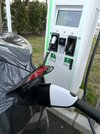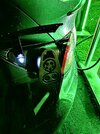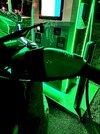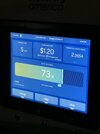Tried out the OEM Tesla CCS1 adapter at a couple Electrify America stations this past weekend. The first one was a 150kW CCS1 charger in Dorchester MA which gave me 30kW @ 70% SoC. The next one was a 350kW CCS1 charger in Providence RI which gave me 100 kW @ 42% SoC. I’ll have to roll in with a lower SoC next time and see how much juice I can get. Not nearly as hassle free as a Supercharger, but great to have another option to use in a pinch on road trips.
Attachments
-
 B46B362A-5FB0-4D4F-B018-35C3390FFEFC.jpeg218.9 KB · Views: 575
B46B362A-5FB0-4D4F-B018-35C3390FFEFC.jpeg218.9 KB · Views: 575 -
 02EF02B5-1DC7-45F8-B277-53B4020AD47A.jpeg221.1 KB · Views: 137
02EF02B5-1DC7-45F8-B277-53B4020AD47A.jpeg221.1 KB · Views: 137 -
 4EC2DC7B-E1FE-4301-9A81-B33F22EFA6D2.jpeg442.9 KB · Views: 145
4EC2DC7B-E1FE-4301-9A81-B33F22EFA6D2.jpeg442.9 KB · Views: 145 -
 B66F63A8-1287-4D2D-88E0-C14DEE9A3B13.jpeg577.3 KB · Views: 137
B66F63A8-1287-4D2D-88E0-C14DEE9A3B13.jpeg577.3 KB · Views: 137 -
 69AEDFFF-55F7-4248-8674-B8C37802BCF1.jpeg777.9 KB · Views: 141
69AEDFFF-55F7-4248-8674-B8C37802BCF1.jpeg777.9 KB · Views: 141 -
 E62FA5EA-5969-447E-BD05-42718FE8EAD8.jpeg635.5 KB · Views: 137
E62FA5EA-5969-447E-BD05-42718FE8EAD8.jpeg635.5 KB · Views: 137 -
 E679E8F3-869D-4FCB-A01F-A87420E3F8B3.jpeg245.1 KB · Views: 136
E679E8F3-869D-4FCB-A01F-A87420E3F8B3.jpeg245.1 KB · Views: 136


